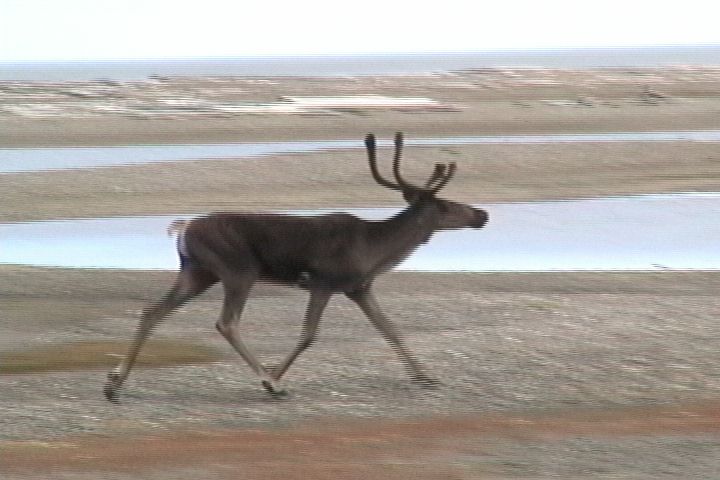
Left: A not-so-wary caribou coming to investigate the on shore humans. (Photo by A. Balsom) 
Above: A falcon nest built in a navigation beacon tower. The reason for the CCG sailing into the Archipelago is primarily to repair these nav beacons for boat passing through. Water depths can be as shallow as ten feet in many areas. Crew members are flown to shore by helicopter to repair, rewire, and repaint the structures fluorescent orange, since the wind, ice, and dust routinely blast it off every winter. (Photo by Laurier crew) 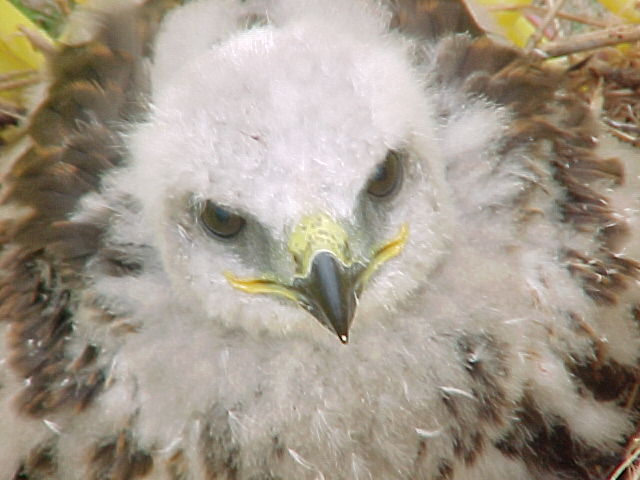
Left: The nest resident, a juvenile falcon. The Canadian Coast Guard takes immense pains to remove these nests and babies without damage, then returns them after repairs are completed. The parents were very distressed, but the babies took it all in stride. (Photo by Laurier crew) 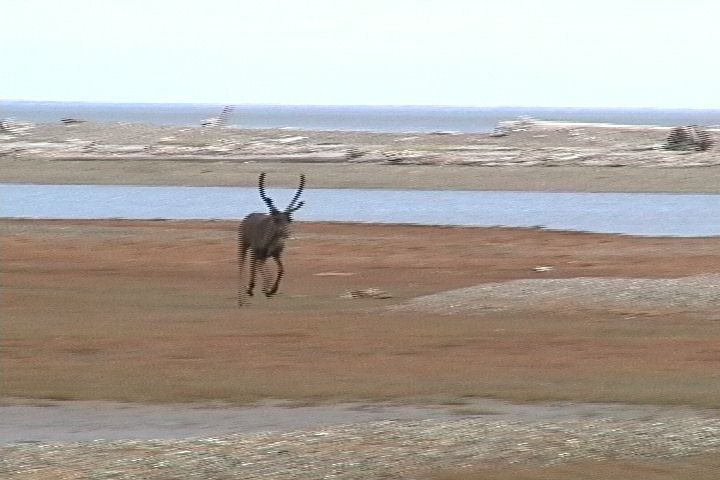
Above: Our friend the caribou galloping towards us. We were at the end of a gravel spit, and the helicopter returning to pick us up (still very far away) chased the caribou down the spit towards us. Screaming and yelling didn't phase it at all--the helicopter landed between us and the caribou, which gave us a little bit of distance. Although caribou are only herbivores, they are still pretty intimidating with their antlers. This wanna-be Indiana Jones almost wet her pants. (Photo by A. Balsom) 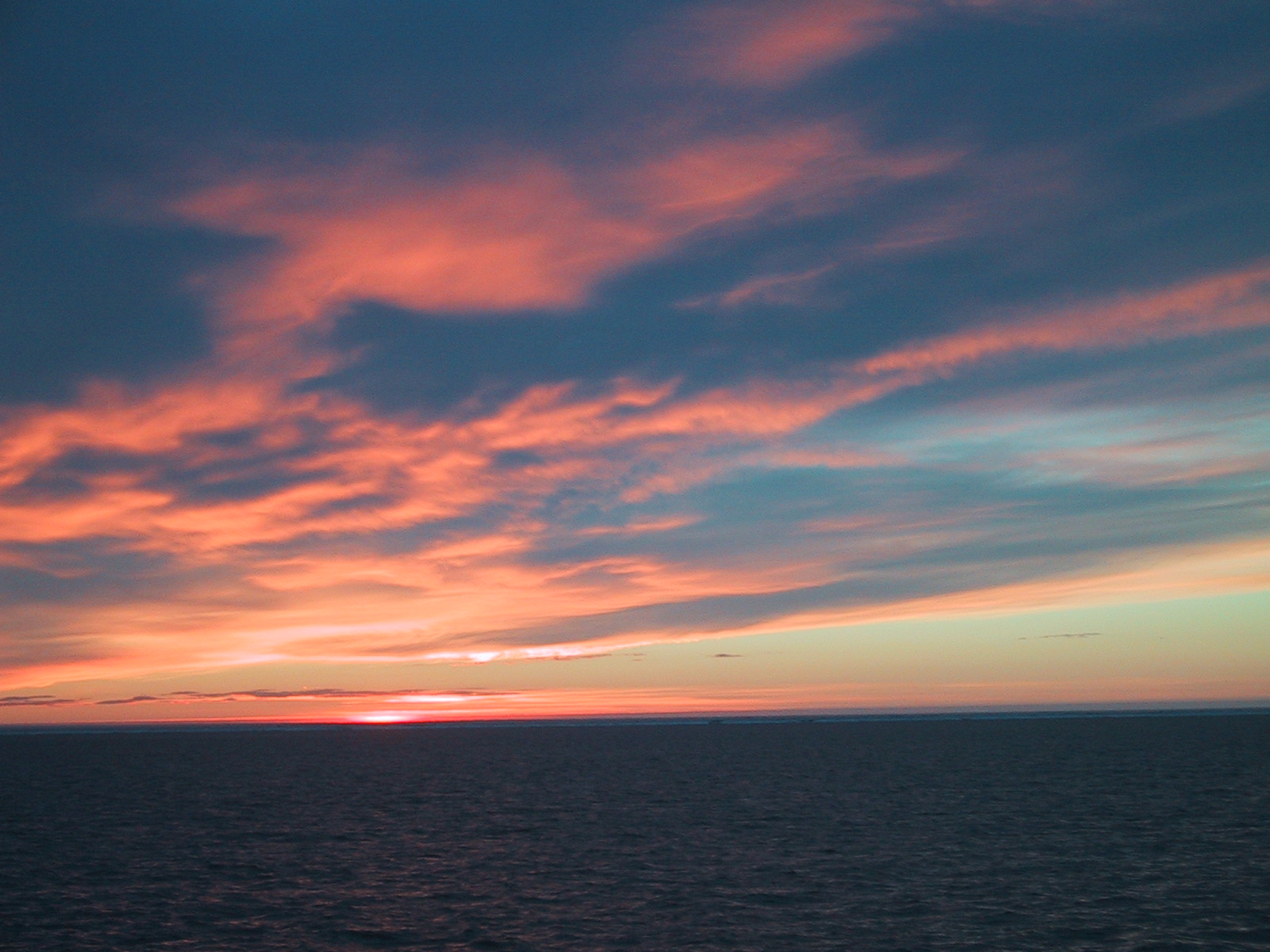
Sunset over Herschel Island, near the Mackenzie River. The island used to be a very busy European whaling station. It was also one of the main reasons for the Royal Canadian Mounted Police to begin to patrol in the Arctic, in order to prevent exploitation of the Inuit by the whalers. (Photo by Laurier crew) 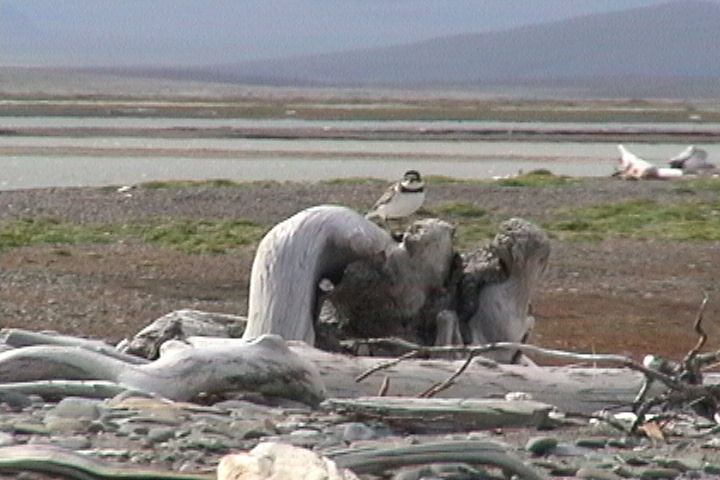
Above: A sandpiper in the Yukon, perched on driftwood. Here, well above the tree line, is a massive amount of wood, spit out by the Mackenzie River, which drains from the Great Slave Lake into the Beaufort Sea. The Mackenzie is Canada's longest river and one of the world's longest--over 1120 miles long, and over 1.2 miles wide at places. It is second in North America only to the Mississippi-Missouri River system. The driftwood has been used by many people to build hunting shelters along the coast. (Photo by A. Balsom) 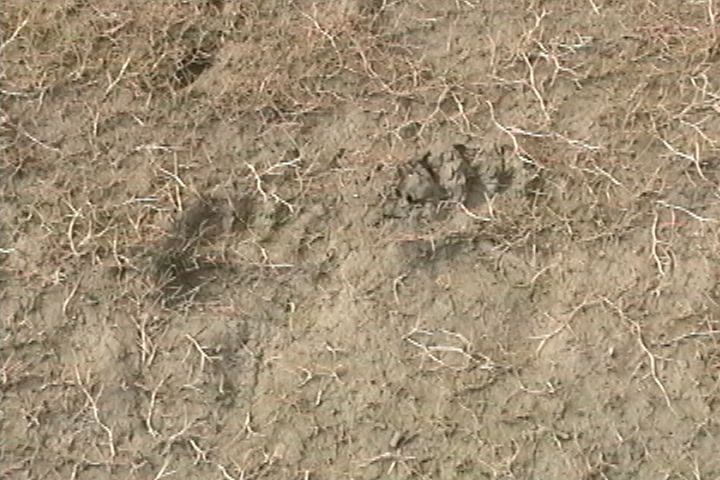
Left: Barren-ground grizzly bear tracks in the mud. For scale, my size 8 boots fit easily inside the prints with room to spare. I was allowed to go along on the helicopter trip as a tourist, and also to assist on large animal watch. I was asked to alert the workers if I saw moose, caribou, muskox, or bears. (Photo by A. Balsom) |

